Aerodynamic Differences between New and Used Soccer Balls
Abstract
1. Introduction
2. Tests and Methods of Analysis
2.1. Wearing out Balls Using a Kicking Robot
2.2. Wind Tunnel Tests
2.3. Simulation of the Flight Trajectory
3. Results
3.1. Drag Coefficient Obtained from the Wind Tunnel Tests
3.2. Changes in the Lift and Side Forces
3.3. Results on the Soccer Balls Flight Trajectories
4. Discussion
4.1. Usage Effects on the Ball Aerodynamics
4.2. Usage Effects on the Flight Trajectories of the Balls
5. Conclusions
Author Contributions
Funding
Data Availability Statement
Conflicts of Interest
References
- Hong, S.; Goff, J.E.; Asai, T. Effect of a soccer ball’s surface texture on its aerodynamics and trajectory. Proc. Inst. Mech. Eng. P 2019, 233, 67–74. [Google Scholar] [CrossRef]
- Adrian, L.K.; Derek, B.L. An aerodynamic analysis of recent FIFA World Cup balls. Eur. J. Phys. 2018, 39, 034001. [Google Scholar] [CrossRef]
- Alam, F.; Steiner, T.; Chowdhury, H.; Moria, H.; Khan, I.; Aldawi, F.; Subic, A. A study of golf ball aerodynamic drag. Procedia Eng. 2011, 13, 226–231. [Google Scholar] [CrossRef]
- Alam, F.; Chowdhury, H.; Stemmer, M.; Wang, Z.; Yang, J. Effects of surface structure on soccer ball aerodynamics. Procedia Eng. 2012, 34, 146–151. [Google Scholar] [CrossRef][Green Version]
- Asai, T.; Seo, K. Aerodynamic drag of modern soccer balls. SpringerPlus 2013, 2, 171. [Google Scholar] [CrossRef][Green Version]
- Goff, J.E.; Asai, T.; Hong, S. A comparison of Jabulani and Brazuca non-spin aerodynamics. Proc. Inst. Mech. Eng. P 2014, 228, 188–194. [Google Scholar] [CrossRef]
- Goff, J.E.; Hong, S.; Asai, T. Aerodynamic and surface comparisons between Telstar 18 and Brazuca. Proc. Inst. Mech. Eng. P 2018, 232, 342–348. [Google Scholar] [CrossRef]
- Naito, K.; Hong, S.; Koido, M.; Nakayama, M.; Sakamoto, K.; Asai, T. Effect of seam characteristics on critical Reynolds number in footballs. Mech. Eng. J. 2018, 5, 17-00369. [Google Scholar] [CrossRef]
- Hong, S.; Asai, T. Effect of panel shape of soccer ball on its flight characteristics. Sci. Rep. 2014, 4, 5068. [Google Scholar] [CrossRef]
- Hussain, S.B.; Shah, S.I.A.; Khan, M.K.A. Aerodynamic design considerations for a soccer ball. In Proceedings of the 2019 Sixth International Conference on Aerospace Science and Engineering (ICASE), Islamabad, Pakistan, 12–14 November 2019; pp. 1–16. [Google Scholar] [CrossRef]
- Mizota, T.; Kurogi, K.; Ohya, Y.; Okajima, A.; Naruo, T.; Kawamura, Y. The strange flight behaviour of slowly spinning soccer balls. Sci. Rep. 2013, 3, 1871. [Google Scholar] [CrossRef]
- Oggiano, L.; Sætran, L. Aerodynamics of modern soccer balls. Procedia Eng. 2010, 2, 2473–2479. [Google Scholar] [CrossRef][Green Version]
- Passmore, M.; Rogers, D.; Tuplin, S.; Harland, A.; Lucas, T.; Holmes, C. The aerodynamic performance of a range of FIFA-approved footballs. Proc. Inst. Mech. Eng. P 2012, 226, 61–70. [Google Scholar] [CrossRef]
- Asai, T.; Hong, S. Aerodynamics of the newly approved football for the English Premier League 2020–21 season. Sci. Rep. 2021, 11, 9578. [Google Scholar] [CrossRef]
- Asai, T.; Nakanishi, Y.; Akiyama, N.; Hong, S. Flow visualization of spinning and nonspinning soccer balls using computational fluid dynamics. Appl. Sci. 2020, 10, 4543. [Google Scholar] [CrossRef]
- Hong, S.; Asai, T.; Seo, K. Visualization of air flow around soccer ball using a particle image velocimetry. Sci. Rep. 2015, 5, 15108. [Google Scholar] [CrossRef] [PubMed]
- Hong, S.; Asai, T. Aerodynamic effects of dimples on soccer ball surfaces. Heliyon 2017, 3, e00432. [Google Scholar] [CrossRef] [PubMed]
- Hong, S.; Asai, T. Effect of surface groove structure on the aerodynamics of soccer balls. Appl. Sci. 2020, 10, 5877. [Google Scholar] [CrossRef]
- Goff, J.E.; Hong, S.; Asai, T. Effect of a soccer ball’s seam geometry on its aerodynamics and trajectory. Proc. Inst. Mech. Eng. P 2020, 234, 19–29. [Google Scholar] [CrossRef]
- Goff, J.E.; Hong, S.; Asai, T. Influence of surface properties on soccer ball trajectories. Proceedings 2020, 49, 143. [Google Scholar] [CrossRef]
- Goff, J.E.; Hobson, C.M.; Asai, T.; Hong, S. Wind-tunnel experiments and trajectory analyses for five nonspinning soccer balls. Procedia Eng. 2016, 147, 32–37. [Google Scholar] [CrossRef]
- Haake, S.J.; Goodwill, S.R.; Carre, M.J. A new measure of roughness for defining the aerodynamic performance of sports balls. Proc. Inst. Mech. Eng. Part C J. Mech. Eng. Sci. 2007, 221, 789–806. [Google Scholar] [CrossRef]
- Mehta, R.D. Aerodynamics of sports balls. Annu. Rev. Fluid Mech. 1985, 17, 151–189. [Google Scholar] [CrossRef]
- Goff, J.E.; Carré, M.J. Trajectory analysis of a soccer ball. Am. J. Phys. 2009, 77, 1020–1027. [Google Scholar] [CrossRef]
- Asai, T.; Kamemoto, K. Flow structure of knuckling effect in footballs. J. Fluids Struct. 2011, 27, 727–733. [Google Scholar] [CrossRef][Green Version]
- Hong, S.; Chung, C.; Nakayama, M.; Asai, T. Unsteady aerodynamic force on a knuckleball in soccer. Procedia Eng. 2010, 2, 2455–2460. [Google Scholar] [CrossRef][Green Version]
- Alam, F.; Hillier, D.; Xia, J.; Chowhdhury, H.; Moria, H.; LaBroory, R.; Subic, A. Aerodynamics of Used cricket balls. In Proceedings of the 17th Australasian Fluid Mechanics Conference, Auckland, New Zealand, 1–4 December 2010. [Google Scholar]
- Mehta, R.; Alam, F.; Subic, A. Review of tennis ball aerodynamics. Sports Technol. 2008, 1, 7–16. [Google Scholar] [CrossRef]
- Haake, S.J.; Chadwick, S.G.; Dignall, R.J.; Goodwill, S.; Rose, P. Engineering tennis—Slowing the game down. Sports Eng. 2000, 3, 131–143. [Google Scholar] [CrossRef]
- Chadwick, S.G.; Haake, S.J. Methods to determine the aerodynamic forces acting on tennis balls in flight. In Tennis Science and Technology, Proceedings of the 1st International Conference on Tennis Science and Technology, London, UK, 1–4 August 2000; Haake, S.J., Coe, A., Eds.; Blackwell Science: Oxford, UK, 2000; pp. 127–134. [Google Scholar]
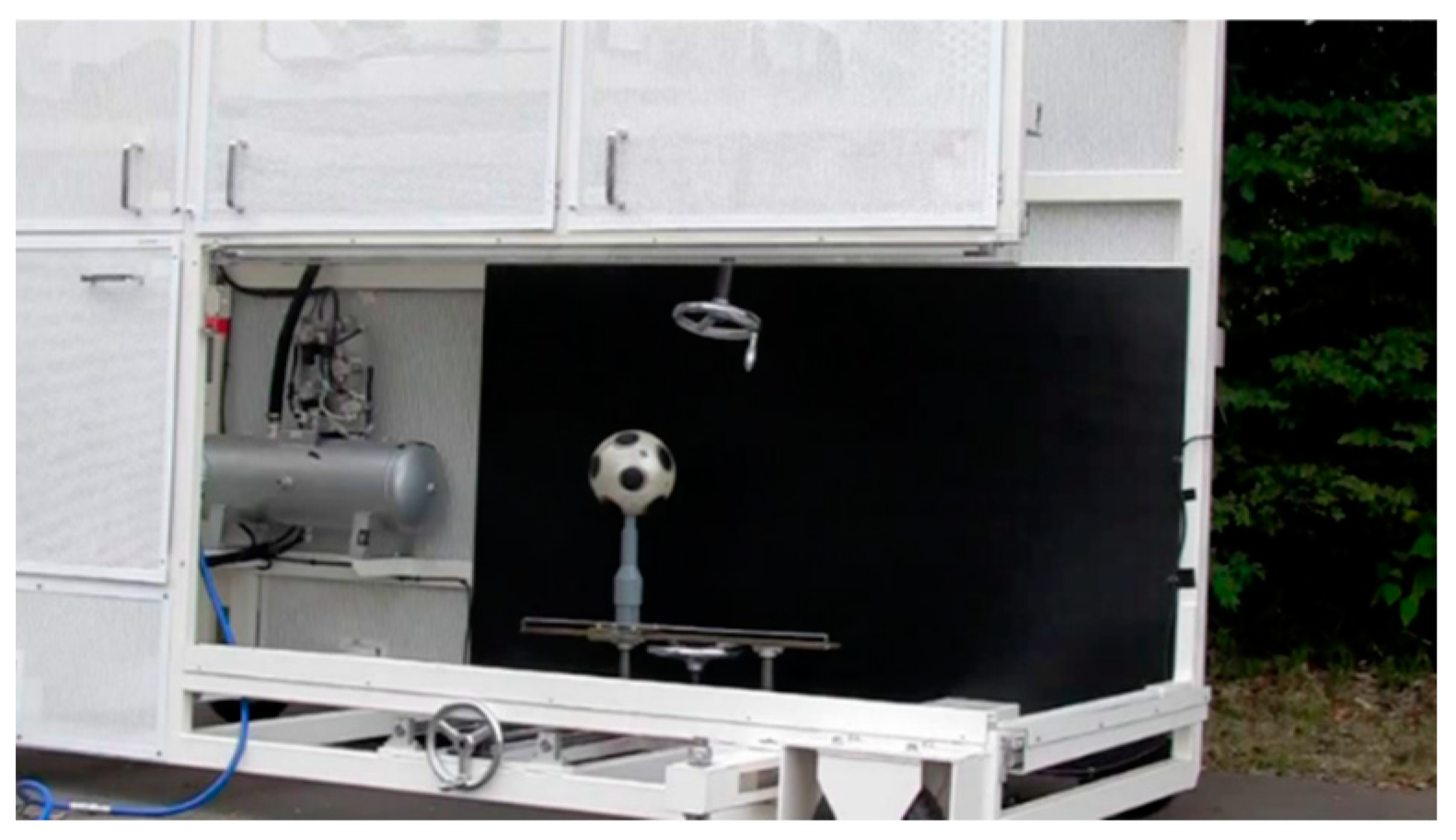
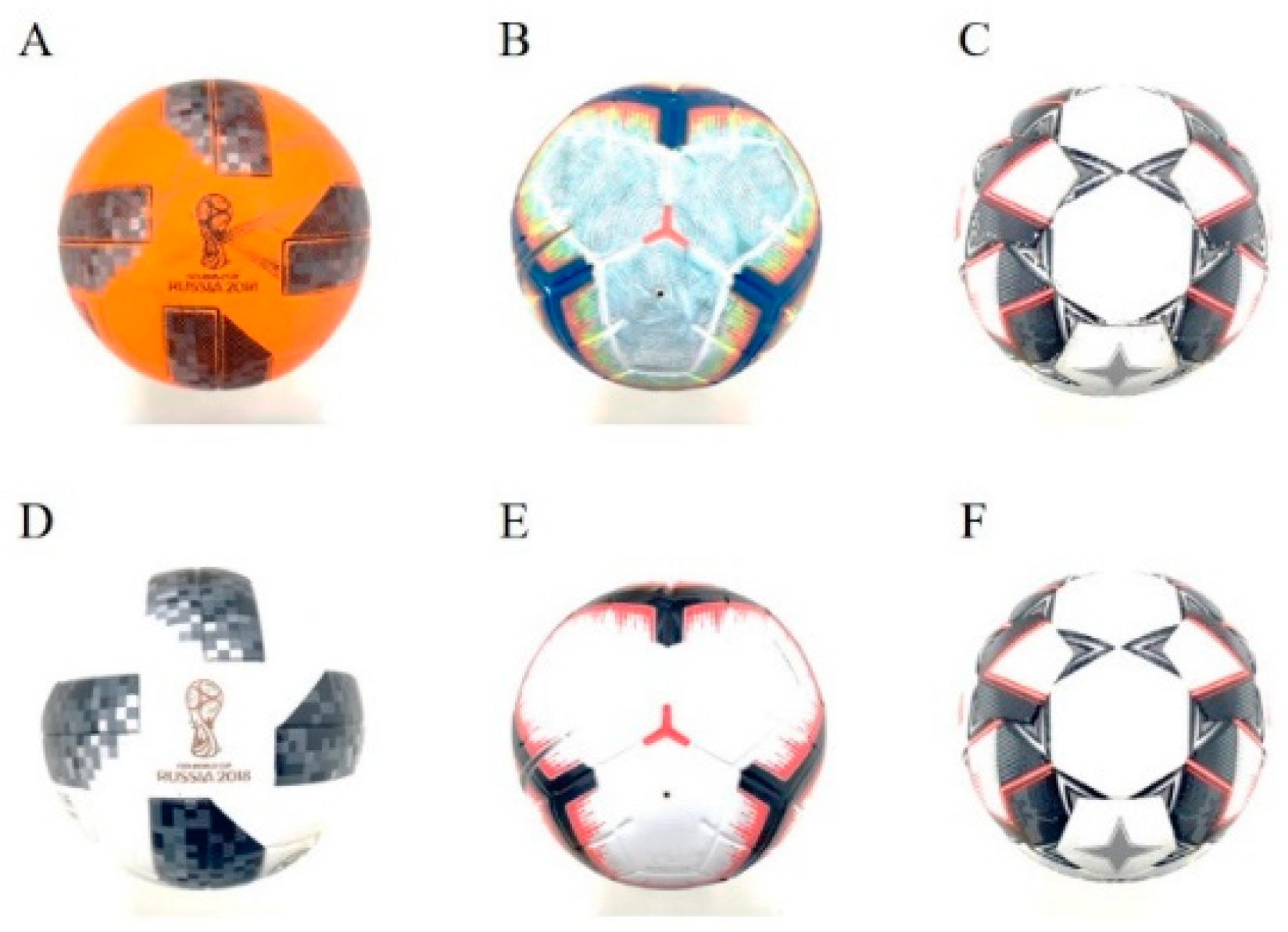
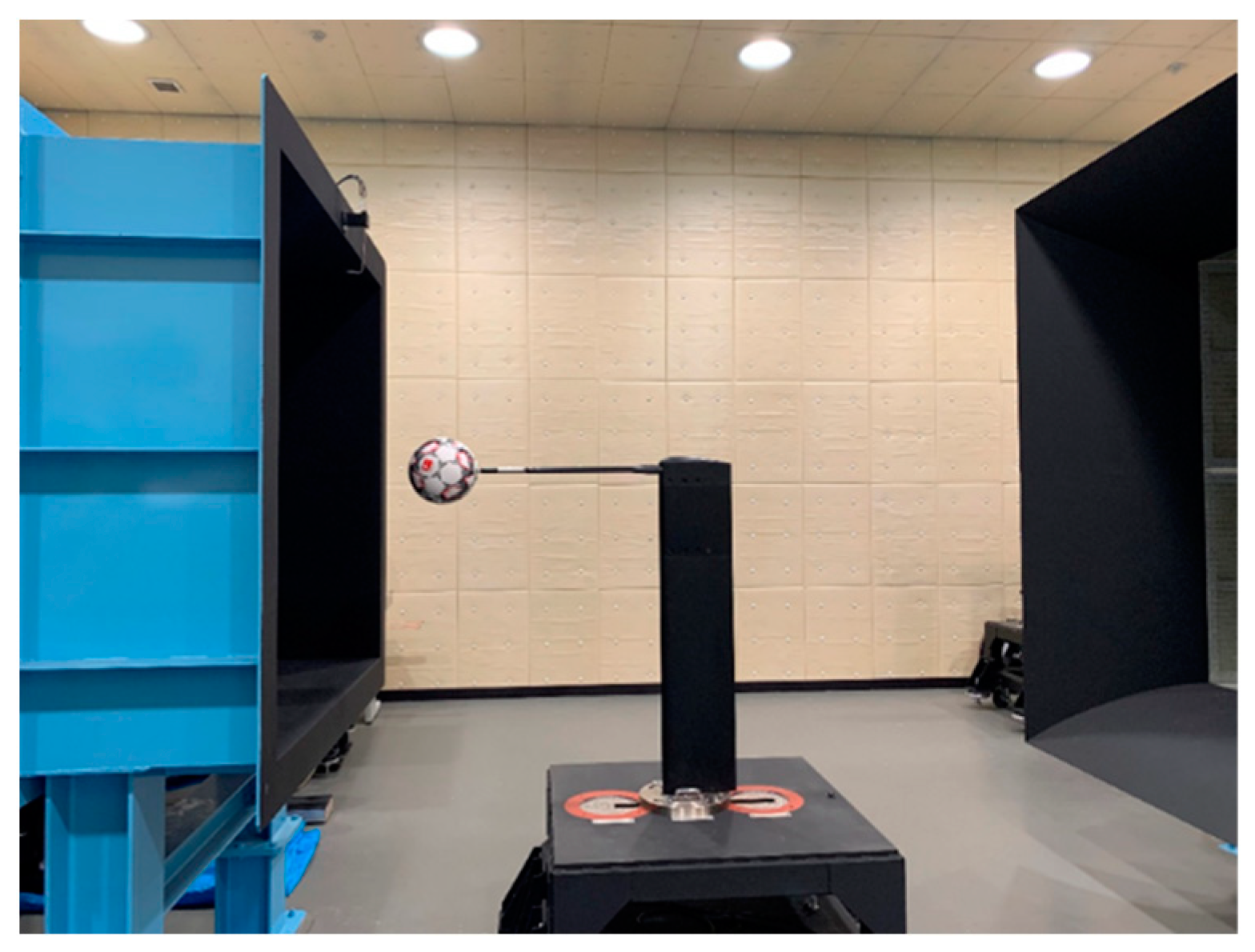
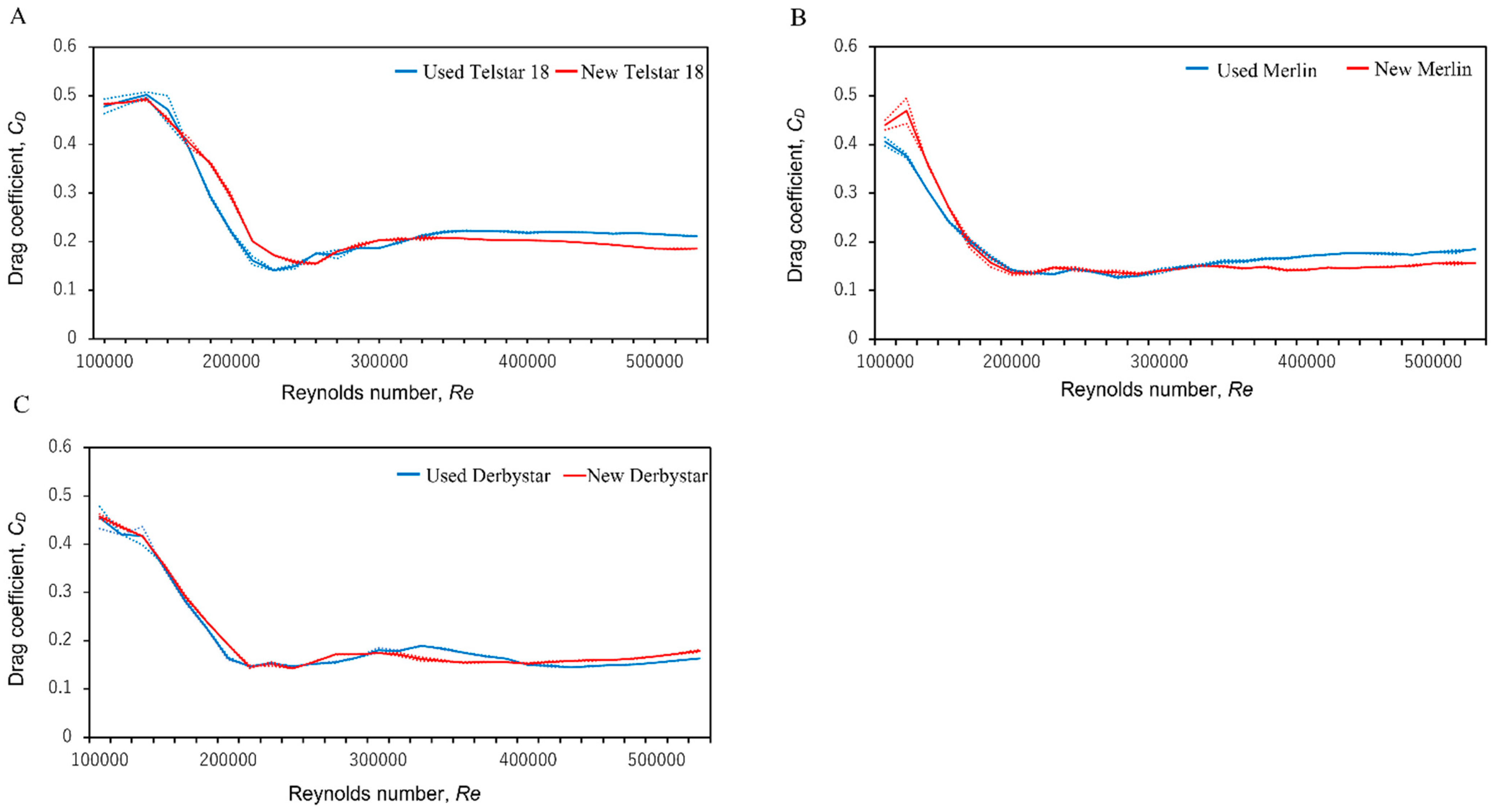
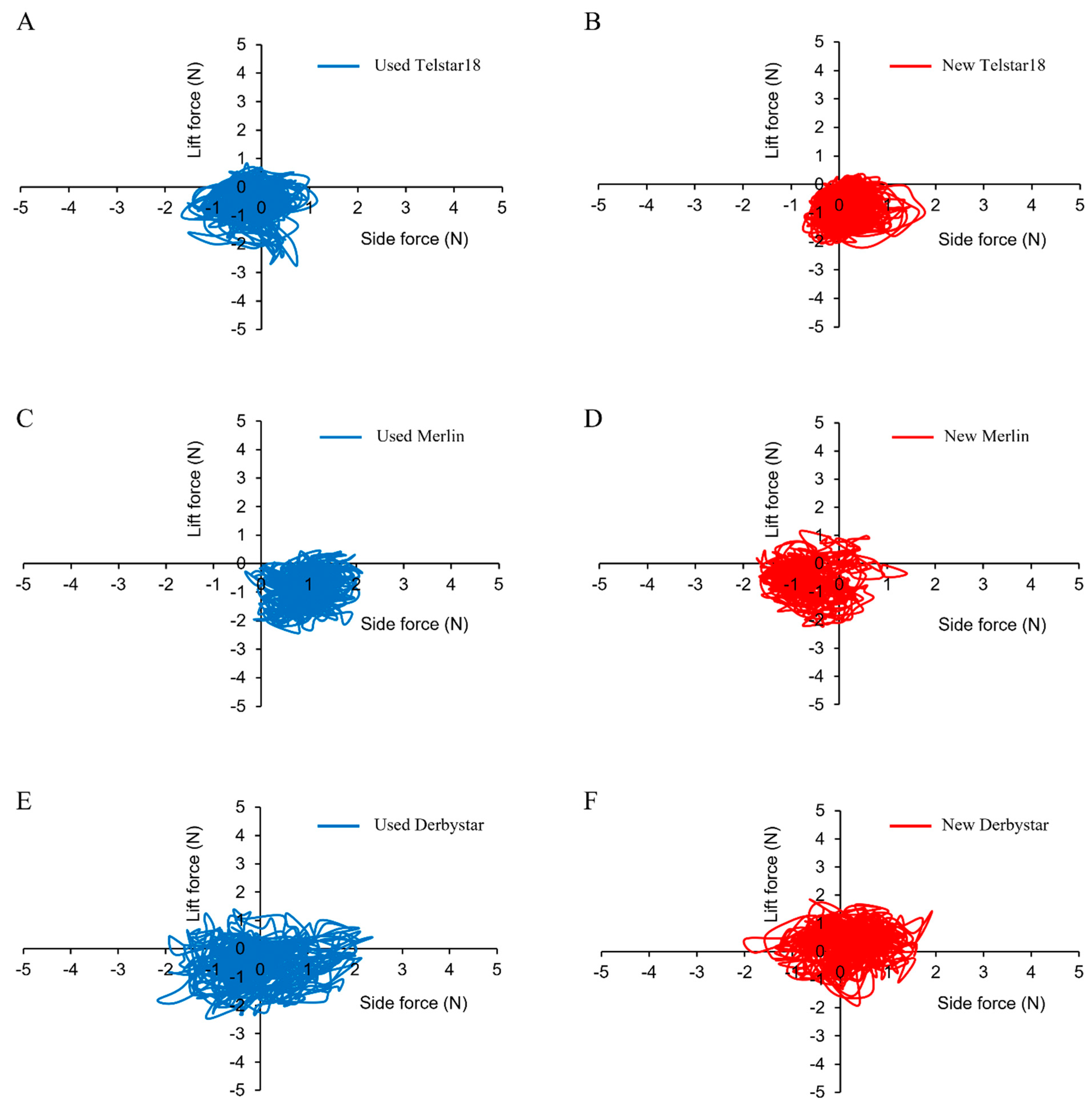
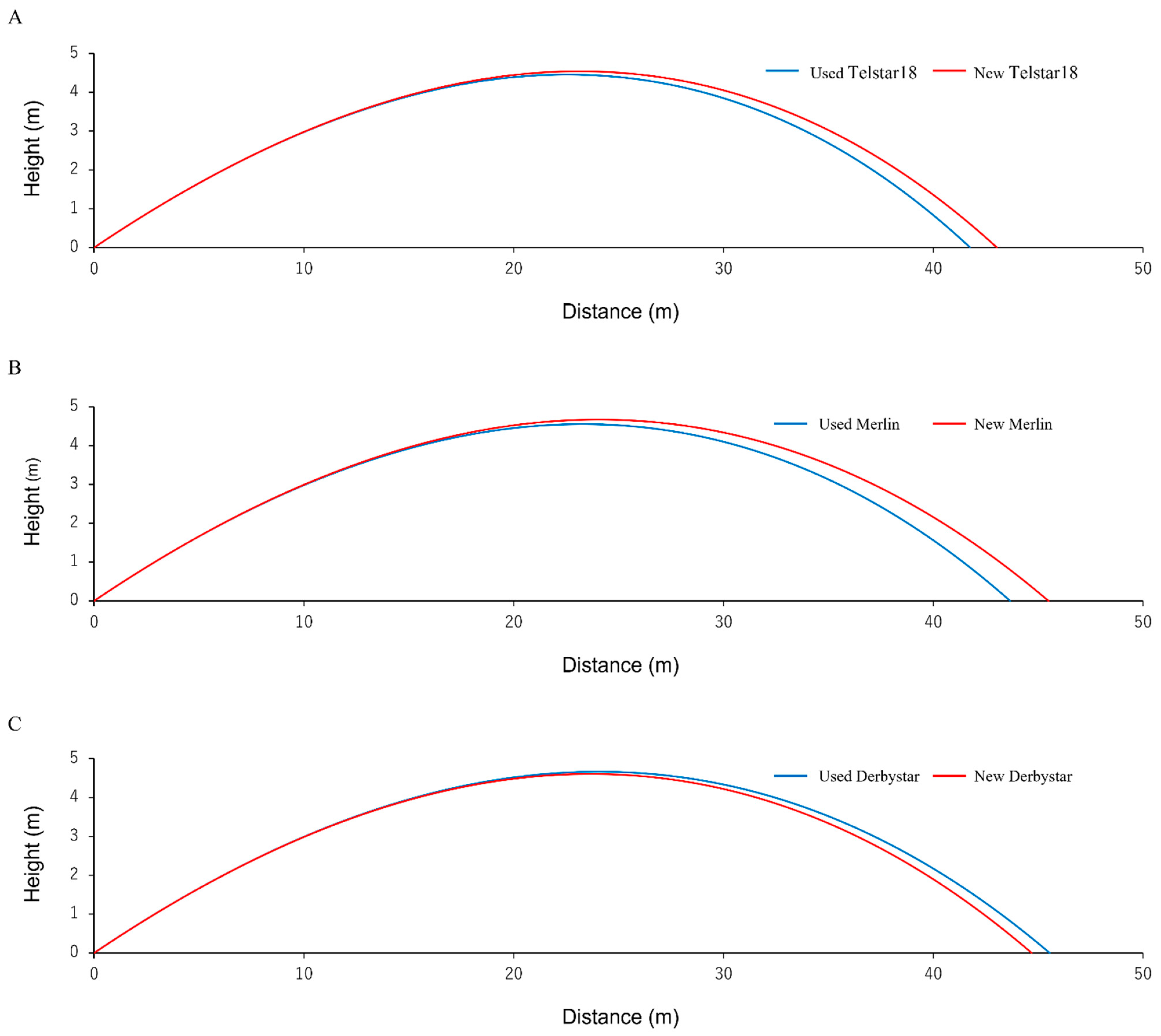
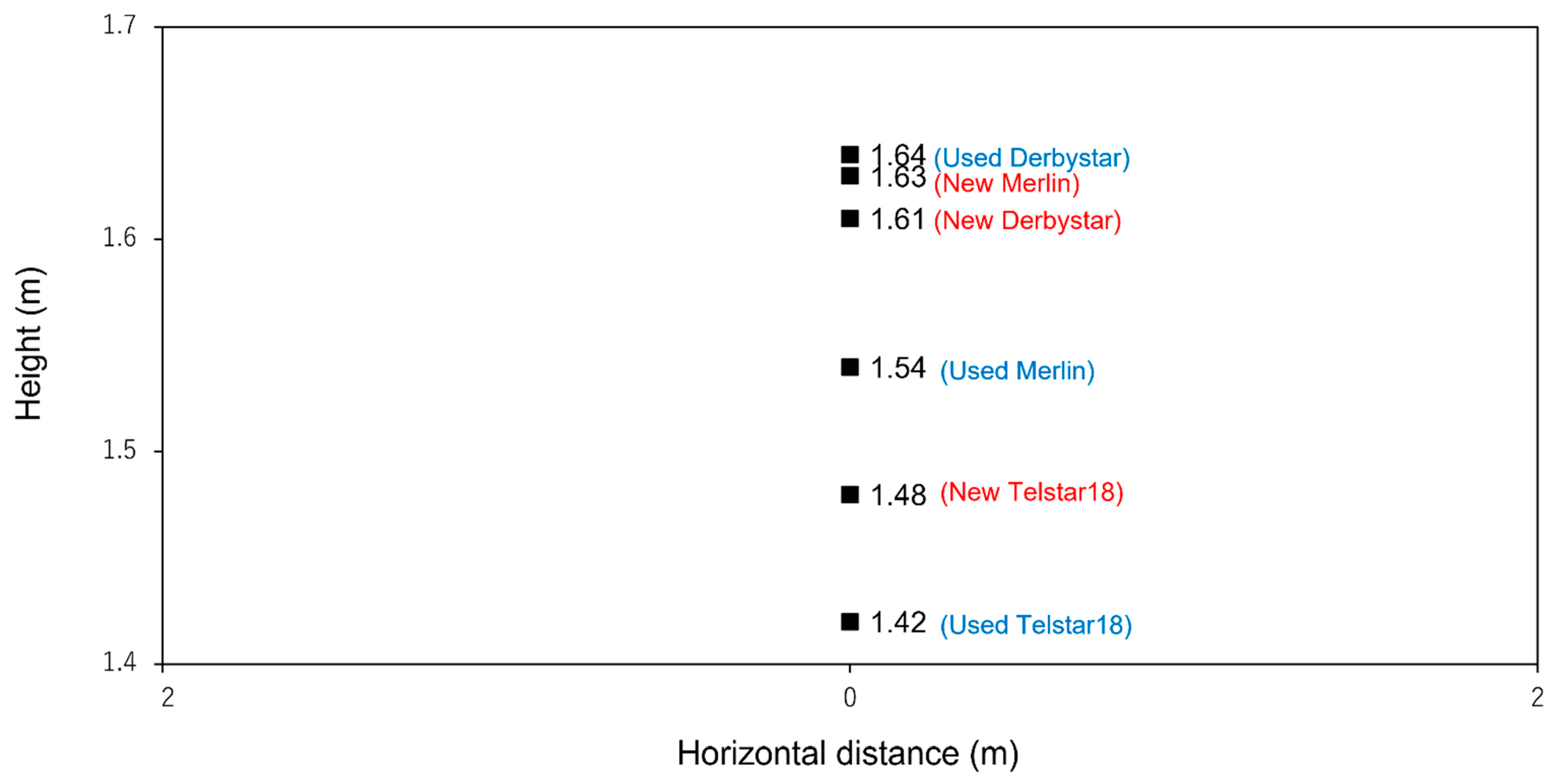

| Airflow Velocity | Type | Telstar18 | Merlin | Derbystar |
|---|---|---|---|---|
| Re = 3.5 × 105 (about 23 m/s) | Used ball | 0.22 (about 10% up) | 0.15 (about 7% up) | 0.18 (about 20% up) |
| New ball | 0.20 | 0.14 | 0.15 | |
| Re = 5.0 × 105 (about 33 m/s) | Used ball | 0.21 (about 15% up) | 0.17 (about 15% up) | 0.15 (about 7% down) |
| New ball | 0.18 | 0.15 | 0.16 |
Publisher’s Note: MDPI stays neutral with regard to jurisdictional claims in published maps and institutional affiliations. |
© 2021 by the authors. Licensee MDPI, Basel, Switzerland. This article is an open access article distributed under the terms and conditions of the Creative Commons Attribution (CC BY) license (https://creativecommons.org/licenses/by/4.0/).
Share and Cite
Hong, S.; Asai, T. Aerodynamic Differences between New and Used Soccer Balls. Appl. Sci. 2021, 11, 7204. https://doi.org/10.3390/app11167204
Hong S, Asai T. Aerodynamic Differences between New and Used Soccer Balls. Applied Sciences. 2021; 11(16):7204. https://doi.org/10.3390/app11167204
Chicago/Turabian StyleHong, Sungchan, and Takeshi Asai. 2021. "Aerodynamic Differences between New and Used Soccer Balls" Applied Sciences 11, no. 16: 7204. https://doi.org/10.3390/app11167204
APA StyleHong, S., & Asai, T. (2021). Aerodynamic Differences between New and Used Soccer Balls. Applied Sciences, 11(16), 7204. https://doi.org/10.3390/app11167204







